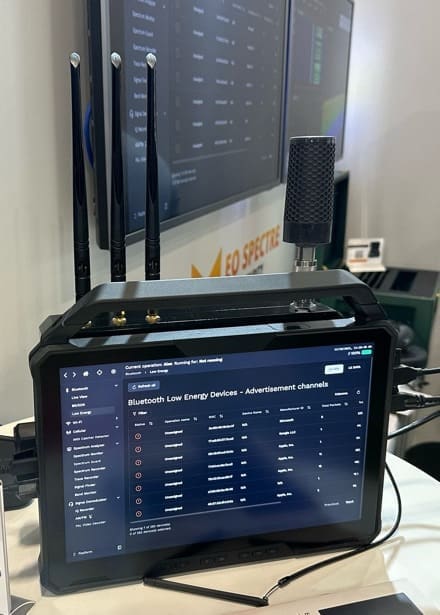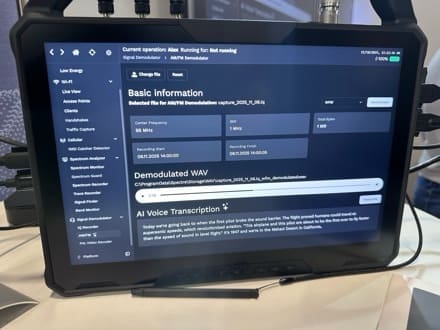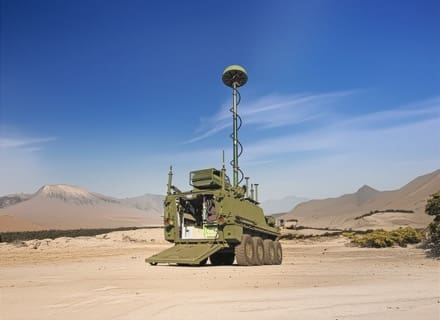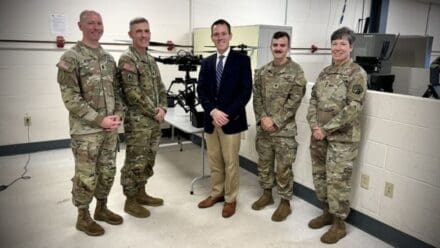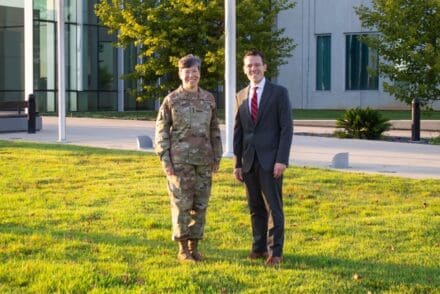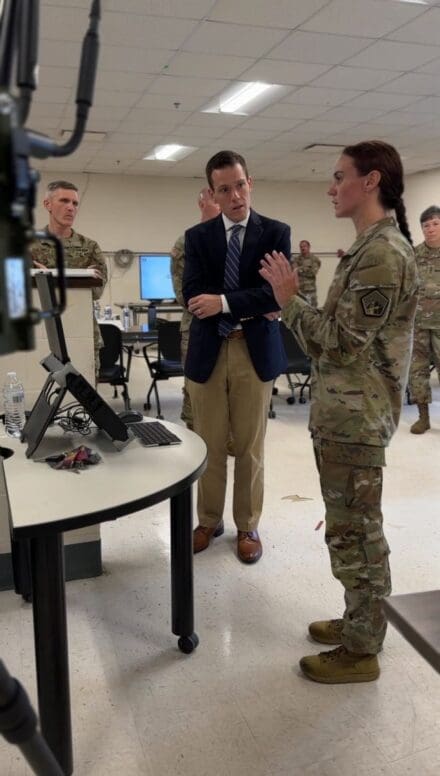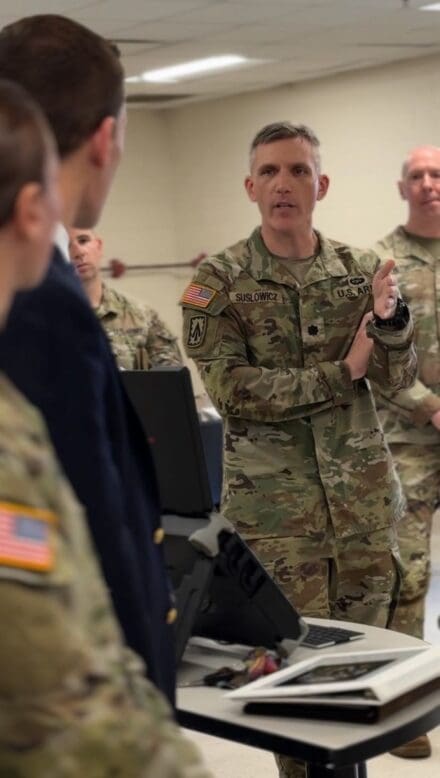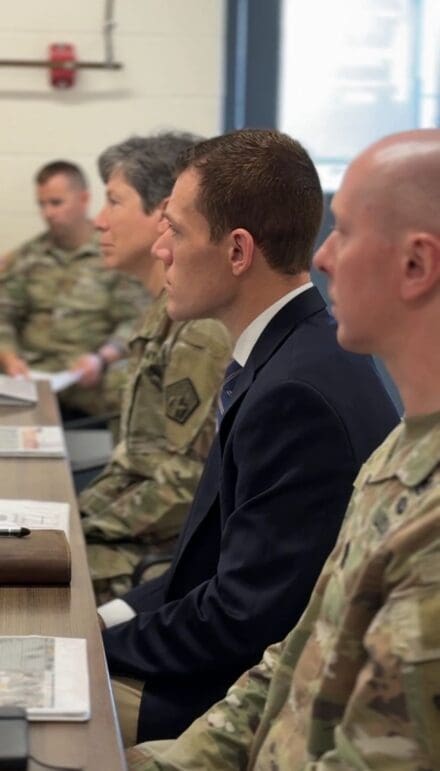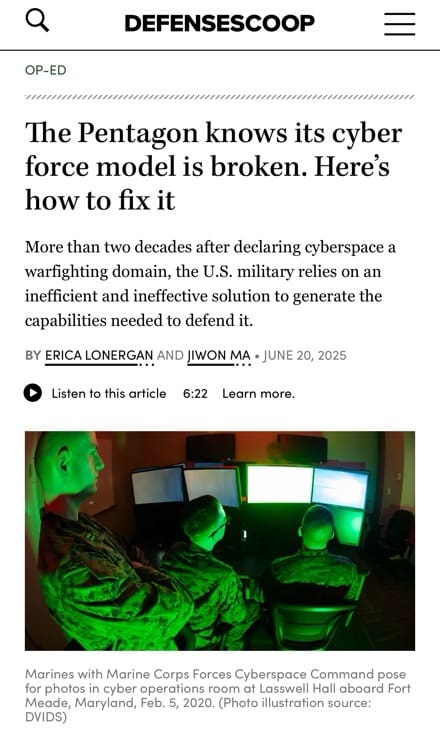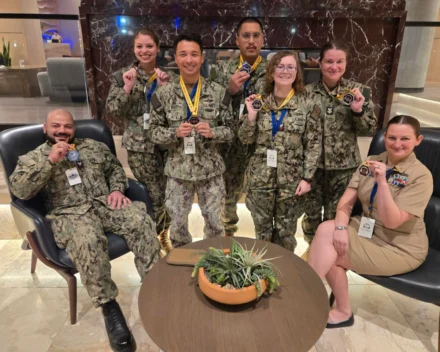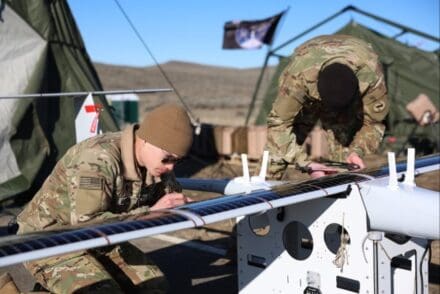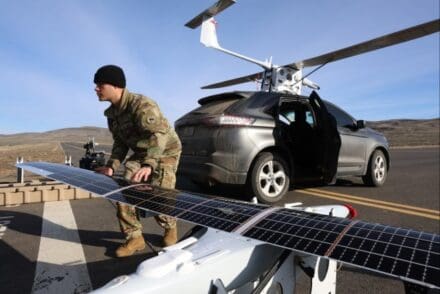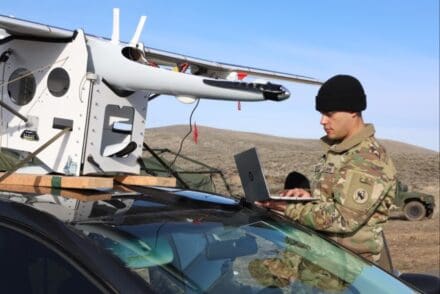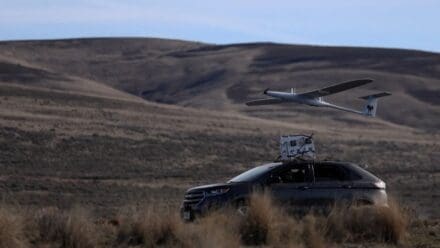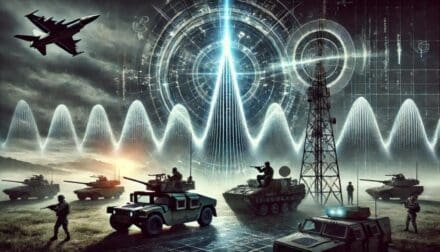
Introduction
To the combat arms platoon leader and company commander: You are leading formations that will close with and destroy the enemy. Your ability to shoot, move, communicate, and then move again (see later section on countering enemy surveillance in the electromagnetic spectrum) is paramount to our success on the modern battlefield. The enemy is sophisticated, adaptive, and aggressively contesting your ability to maneuver in all domains, including the electromagnetic spectrum (EMS). You are not alone in this fight; the intelligence and cyber communities will enable you to dominate the EMS. These communities stand ready to provide you with actionable targets and the means to influence/dominate the EMS at echelon. This is not theory; this is the reality of combat against peer and near-peer adversaries, and we are bringing the full weight of the Department of Defense (DoD) and its combat support agencies to bear. Your S-2 section and Cyber Electromagnetic Warfare Activities (CEMA) cell will innovate at speed across the range of operations to ensure that you have the capabilities necessary to win.
SIGINT and EW: Your Tactical Edge
Signals intelligence (SIGINT) and electromagnetic warfare (EW) are distinct but complementary disciplines that must be integrated effectively to maximize battlefield effects. SIGINT identifies and characterizes enemy signals, providing critical intelligence that inform EW operations. EW teams can use that information to help locate enemy positions for destruction, or simply to disrupt, deceive, or deny the adversary’s use of the electromagnetic spectrum. Proper coordination between SIGINT and EW enables deception operations, enhances precision targeting, and strengthens force protection measures, ensuring that friendly forces maintain dominance over the EMS while denying the enemy key capabilities.
Based on historical analysis of large-scale combat operations (LSCO), recent lessons learned from Ukraine, and predictive analysis of China’s People’s Liberation Army (PLA) capabilities, the teaming of SIGINT and EW can be a force multiplier across the warfighting functions. By integrating SIGINT-derived intelligence with EW’s ability to deny and disrupt, we can significantly degrade an adversary’s ability to maneuver and execute multidomain operations (MDO).
Understanding SIGINT in Your Fight
SIGINT is not just a tool for strategic planners in some far-off headquarters. It is a tactical enabler that allows you to detect, locate, and exploit enemy communications in real time. Whether you are setting up an ambush, planning a fire mission, or maneuvering to secure a key objective, SIGINT can provide the enemy’s disposition, intent, and vulnerabilities. The Army’s ability to identify and track enemy command nodes, air defense systems, and maneuver elements through SIGINT means you can strike at the right place and time with overwhelming force.
How EW Shapes the Battlefield
EW is your ability to seize control of the EMS. EW is the counterweight to enemy SIGINT and can greatly affect their ability to execute command and control (C2) while disrupting their ability to communicate, navigate, and coordinate. If the enemy cannot receive orders, they cannot react. If their targeting systems are blinded, they cannot fire effectively. Ultimately, if they can’t navigate, they cannot effectively maneuver forces on the battlefield. EW, when employed effectively, can have significant battlefield effects, all without firing a shot.
EW’s Three Essential Functions:
Electromagnetic Support (ES): Detecting and identifying enemy emitters to support targeting and situational awareness.
Electromagnetic Attack (EA): Jamming and deception operations that deny the enemy use of the spectrum.
Electromagnetic Protection (EP): Ensuring that friendly forces maintain reliable communications despite enemy jamming, to include employment of emission control measures (e.g., radio power, antenna placement, etc.) to defeat enemy attempts to surveil and target friendly forces.
The Critical Role of SIGINT and EW in Tactical Operations
The operational environment requires agility, synchronization, and unity of effort to converge all sensors and effects on a rapidly evolving threat. The ability to integrate SIGINT with EW at the tactical level allows commanders to enhance targeting fidelity (SIGINT and EW), disrupt adversary operations (EW), and provide real-time intelligence for maneuver forces (SIGINT).
To focus on C2 and counter-C2, expanded maneuver, and cross-domain fires, we must team SIGINT and EW across EA, ES, and EP to present multiple dilemmas to our enemy, enhance C2 protection, and increase lethality. Let’s look at an example:
Kill Chain Analysis: A Counter-Unmanned Aerial System (C-UAS) Scenario
In an era where UAS play an increasingly critical role in modern warfare, understanding the full kill chain process for countering these threats is essential for operational success.
Phase 1: Detect and Identify
A brigade combat team (BCT) is executing a deliberate attack when SIGINT elements intercept and transcribe enemy communications emanating from an urban area associated with drone activity. Electromagnetic support reporting from sensors riding on a remote-controlled scouting vehicle confirms the presence of enemy UAS operating frequencies, geolocating multiple launch sites and relay nodes.
Phase 2: Target and Disrupt
Upon confirming the threat, the BCT’s organic EW platoon, using Terrestrial Layer System (TLS) Manpacks, receives the locations of the threat signals of interest (SOI), and executes an electromagnetic attack to jam the drone’s control frequencies, disrupting the operator’s ability to maneuver the UAS effectively. Simultaneously, SIGINT analysts coordinating with higher-echelon intelligence teams pinpoint the drone operator’s location for kinetic targeting.
Phase 3: Engage and Destroy
With the drone rendered ineffective, the fire support element coordinates an artillery strike on the enemy UAS ground control station, leveraging the precision geolocation refined by enhanced tools like the Electromagnetic Warfare Planning and Management Tool (EWPMT) and the Army Intelligence Data Platform (AIDP). Simultaneously, the EW platoon continues to jam the enemy’s communications, preventing coordinated support or retrograde. Friendly forces neutralize the threat, allowing maneuver elements to proceed unimpeded.
Phase 4: Assess and Adapt
Post-strike analysis from SIGINT utilizing High Altitude Platform (HAP) sensors reveals ongoing enemy attempts to reestablish drone operations, underscoring the necessity for sustained EA efforts. In response, SIGINT teams disseminate updated threat reporting to the EW platoon, enabling them to adjust jamming frequencies and counter enemy adaptations. Concurrently, SIGINT elements refine their intelligence collection to anticipate and prepare for potential future enemy tactics, ensuring proactive EW measures.
This coordinated SIGINT and EW kill chain ensures the enemy’s UAS capability is neutralized before it can affect friendly operations. This vignette effectively illustrates the critical synergy between intelligence-driven targeting and spectrum dominance.
How You Can Leverage SIGINT and EW at Your Level
To gain a decisive battlefield advantage, leaders must integrate SIGINT and EW capabilities to counter enemy threats in the EMS. The following approaches can help achieve this:
Incorporate SIGINT and EW into the DNA of Your Planning and Execution
From the outset, consider how to effectively integrate these capabilities into your operations to inform and shape your decision-making. Collaborate closely with supporting staff elements, such as the BCT CEMA cell and S-2 section, to gain a deep understanding of the enemy’s electromagnetic spectrum usage and identify opportunities to disrupt and exploit their vulnerabilities. By incorporating SIGINT and EW into your operational framework, you can create a more comprehensive and effective approach to achieving your mission objectives.
Train Your Leaders and Soldiers to Recognize and Exploit the EMS
Your Soldiers must understand that controlling the EMS is just as vital as controlling key terrain. Integrate SIGINT and EW considerations into your battle drills, mission rehearsals, and after-action reviews. Units that fail to account for enemy EW will put their formations at significant risk on the battlefields of the future. Training ensures you can adapt and maintain tempo under contested conditions.
SIGINT and EW teams can sense across the EMS with ES at the tactical edge. By developing new tactics, techniques, and procedures (TTPs), SIGINT support from higher echelons, such as from the division level, can be pushed down to BCTs, providing real-time EMS sensing without burdening them with protecting and maneuvering higher-echelon intelligence capabilities. Ultimately, this enables more agile and lethal maneuver forces.
Ensure Interoperability with Supporting SIGINT and EW Units
SIGINT and EW units are enablers, not afterthoughts. Integration of SIGINT and EW elements throughout the organic targeting process is key. Work with them to refine target identification and EA options. Develop unit standard operating procedures (SOPs) that detail how to request and synchronize their capabilities in real-time engagements and incorporate them in all rehearsals. Leaders must ensure that EW Soldiers are embedded within tactical formations to provide immediate effects that enhance maneuver and fires.
Adopt an Aggressive, Learning-Focused Mindset
The enemy is adapting. As such, we must do the same. Stay informed on the latest TTPs by leveraging resources such as the Center for Army Lessons Learned (CALL) and current doctrinal publications like Field Manual (FM) 2-0, Intelligence, and FM 3-12, Cyberspace Operations and Electromagnetic Warfare. We must continue to share lessons learned across our formations and with intelligence and EW enablers to continually refine our operational effectiveness.
Conclusion
In an era where the electromagnetic spectrum is as contested as the physical battlespace, success demands leaders fully integrate SIGINT and EW into their tactical decision-making. These are not ancillary capabilities but core enablers of maneuver, fires, and protection. By treating SIGINT and EW as an integral piece of battlefield operations rather than separate support functions, we can outthink, outmaneuver, and overwhelm our adversaries before they can react.
The future fight will be won by those who master the integration of intelligence and electromagnetic warfare, seamlessly fusing these disciplines into their formations and operational planning. This requires continuous learning, rigorous training, and adaptive thinking to counter evolving enemy tactics. The intelligence and EW communities stand ready to support, provide counsel for our specialties, and execute through our commanders’ intent.
Superiority in the EMS is not an option — it is a necessity. By embracing these capabilities and fostering interoperability, we ensure that our forces maintain a lethal edge on the battlefield. The challenge is clear, and the tools are at hand. Now is the time to educate our leaders and Soldiers and incorporate these capabilities into our training so we are prepared to fight and win our nation’s wars.
By MG Rick Appelhans and MG Ryan Janovic
MG Richard T. “Rick” Appelhans currently serves as the commanding general of the U.S. Army Intelligence Center of Excellence and Fort Huachuca, AZ. Prior to assuming this position, he served as the director of Intelligence, U.S. Forces Korea/deputy director of Intelligence, Combined Forces Command. MG Appelhans’ overseas assignments and deployments include the Republic of Korea, Kuwait, Germany, the Netherlands, Afghanistan, Bosnia-Herzegovina, and Iraq. He began his military career as an Armor officer, serving as a tank platoon leader, company executive officer, and battalion S-4. Since transitioning to Military Intelligence in 1997, MG Appelhans has served in a variety of command and staff assignments to include detachment commander, battalion S-2, company commander, brigade combat team S-2, analysis and control element chief, region commander, division G-2, and group commander.
MG Ryan Janovic currently serves as the commanding general of the U.S. Army Cyber Center of Excellence and Fort Eisenhower, GA. A native of Akron, OH, he graduated from the U.S. Military Academy at West Point, NY, in 1993 and commissioned into the Military Intelligence Corps. He served with Multi-National Forces-Iraq, 1st Infantry Division in eastern Afghanistan, Military Intelligence in Korea, and later with Commander United Nations Command/Combined Forces Command/U.S. Forces Korea. His other assignments include various posts throughout the U.S. to include a tour as a White House Fellow. In 2019, MG Janovic joined the cyber ranks as the deputy commander of Joint Force Headquarters – Cyber (Army), leading the organization toward unit citations earned in support of U.S. Central Command.
This article appears in the Summer 2025 issue of Infantry. Read more articles from the professional bulletin of the U.S. Army Infantry at www.benning.army.mil/Infantry/Magazine or www.lineofdeparture.army.mil/Journals/Infantry.
